Volume 124
Displaying 1-10 of 10 articles from this issue
- |<
- <
- 1
- >
- >|
-
Article type: Cover
1988 Volume 124 Pages Cover1-
Published: March 20, 1988
Released on J-STAGE: November 09, 2017
Download PDF (48K) -
Article type: Cover
1988 Volume 124 Pages Cover2-
Published: March 20, 1988
Released on J-STAGE: November 09, 2017
Download PDF (48K) -
Article type: Article
1988 Volume 124 Pages 1-14
Published: March 20, 1988
Released on J-STAGE: November 09, 2017
Download PDF (642K) -
Article type: Article
1988 Volume 124 Pages 15-28
Published: March 20, 1988
Released on J-STAGE: November 09, 2017
Download PDF (578K) -
Article type: Article
1988 Volume 124 Pages 29-40
Published: March 20, 1988
Released on J-STAGE: November 09, 2017
Download PDF (832K) -
Article type: Article
1988 Volume 124 Pages 41-49
Published: March 20, 1988
Released on J-STAGE: November 09, 2017
Download PDF (657K) -
Article type: Article
1988 Volume 124 Pages 50-62
Published: March 20, 1988
Released on J-STAGE: November 09, 2017
Download PDF (580K) -
Article type: Article
1988 Volume 124 Pages 63-79
Published: March 20, 1988
Released on J-STAGE: November 09, 2017
Download PDF (860K) -
Article type: Article
1988 Volume 124 Pages 80-98
Published: March 20, 1988
Released on J-STAGE: November 09, 2017
Download PDF (1174K) -
Article type: Article
1988 Volume 124 Pages 99-102
Published: March 20, 1988
Released on J-STAGE: November 09, 2017
Download PDF (316K)
- |<
- <
- 1
- >
- >|
